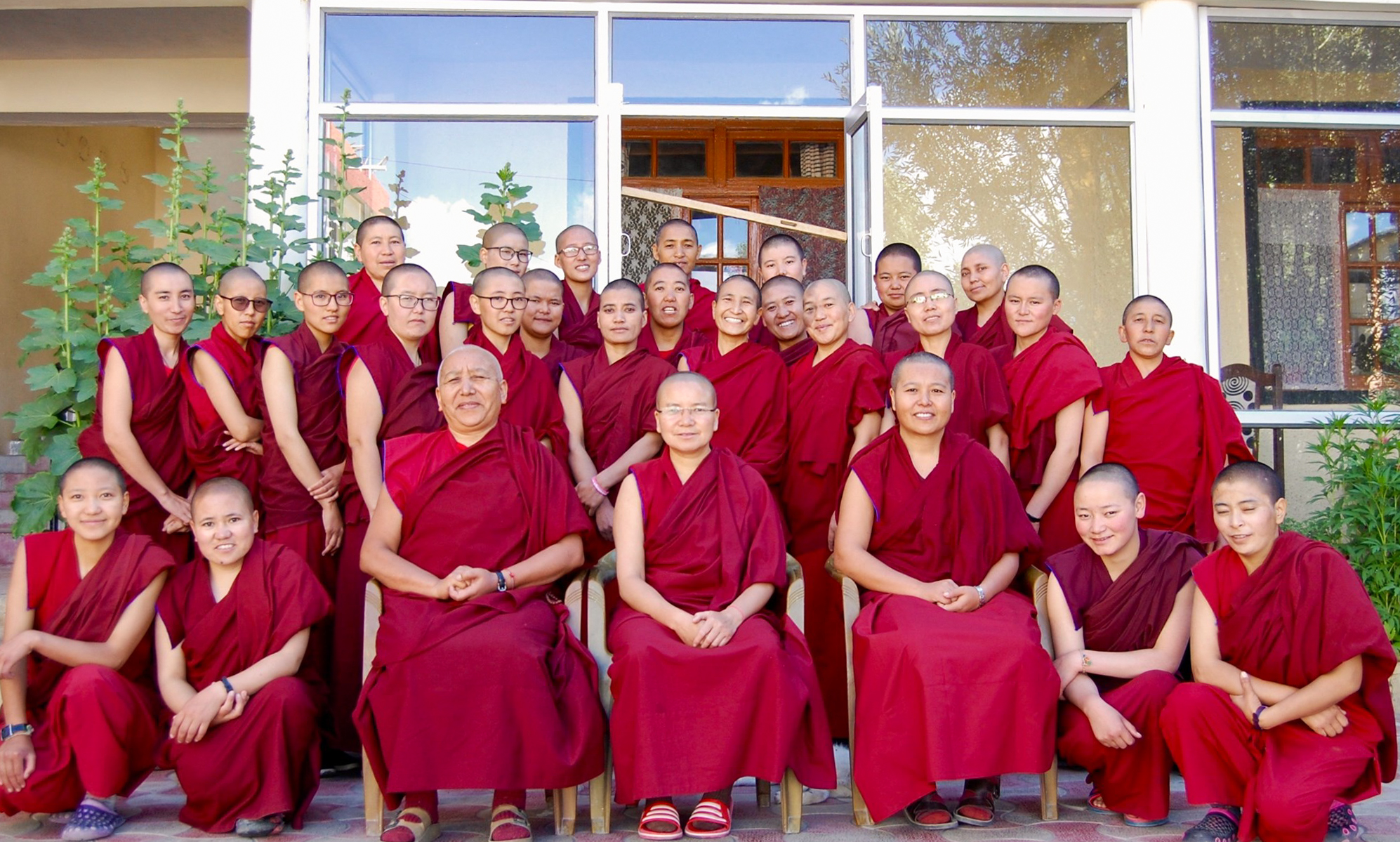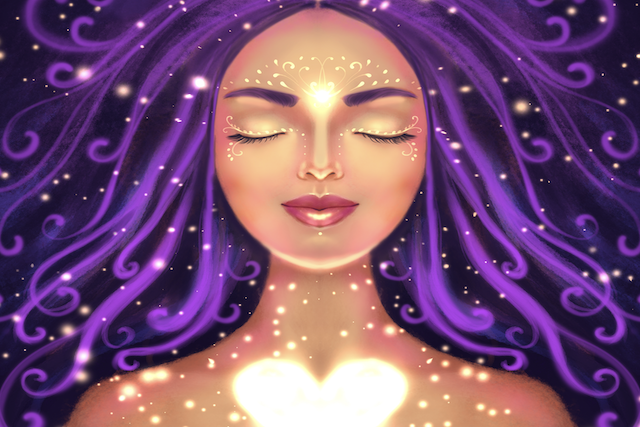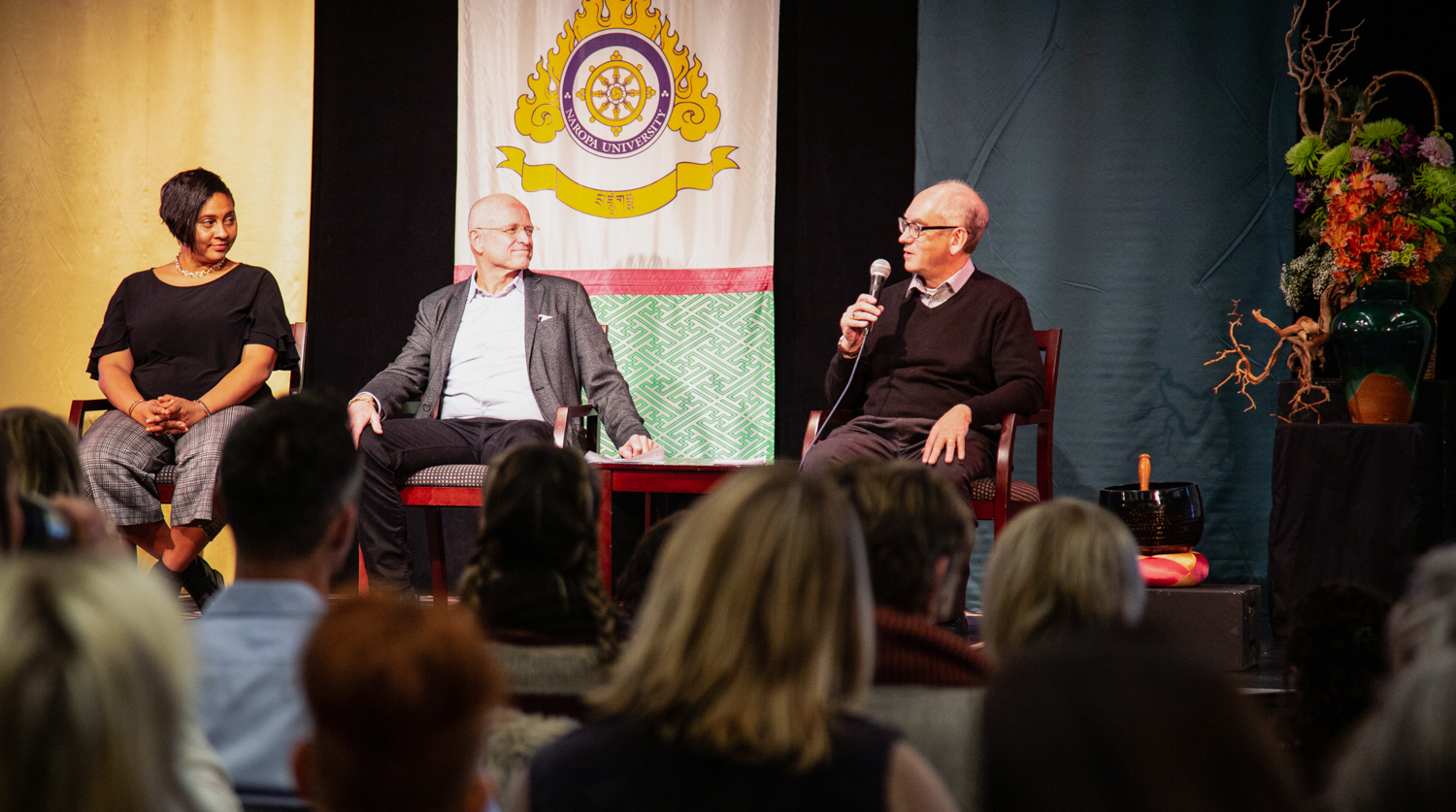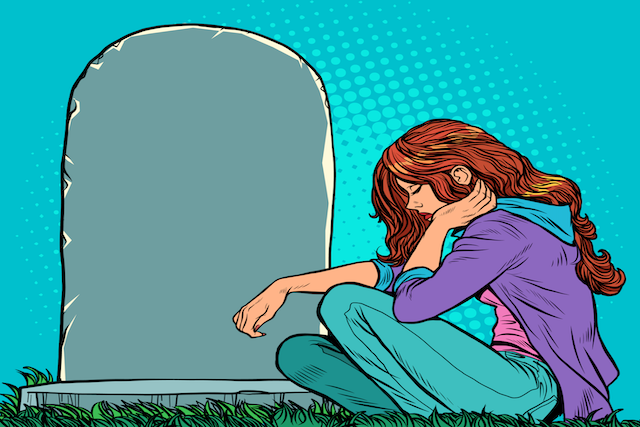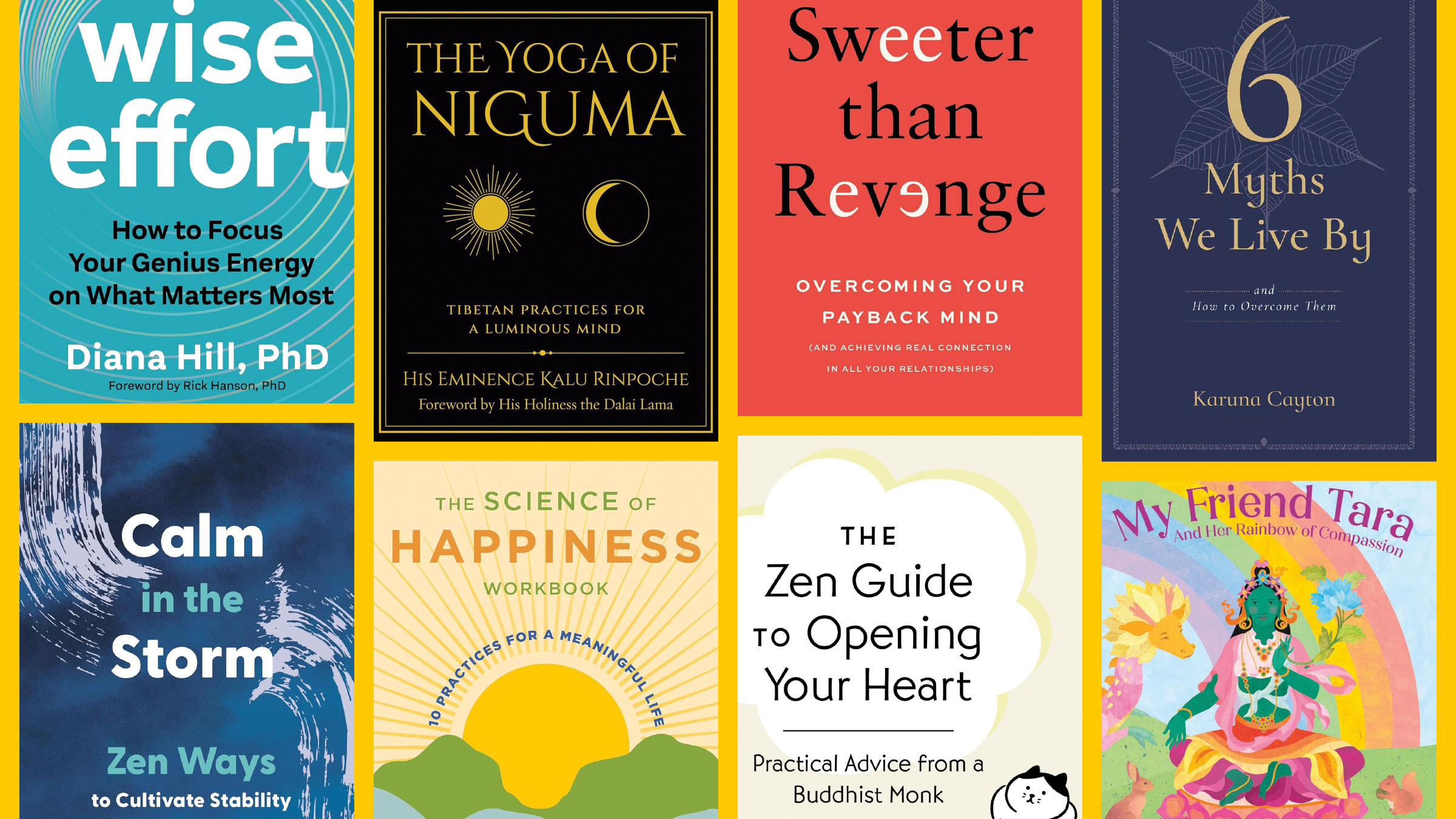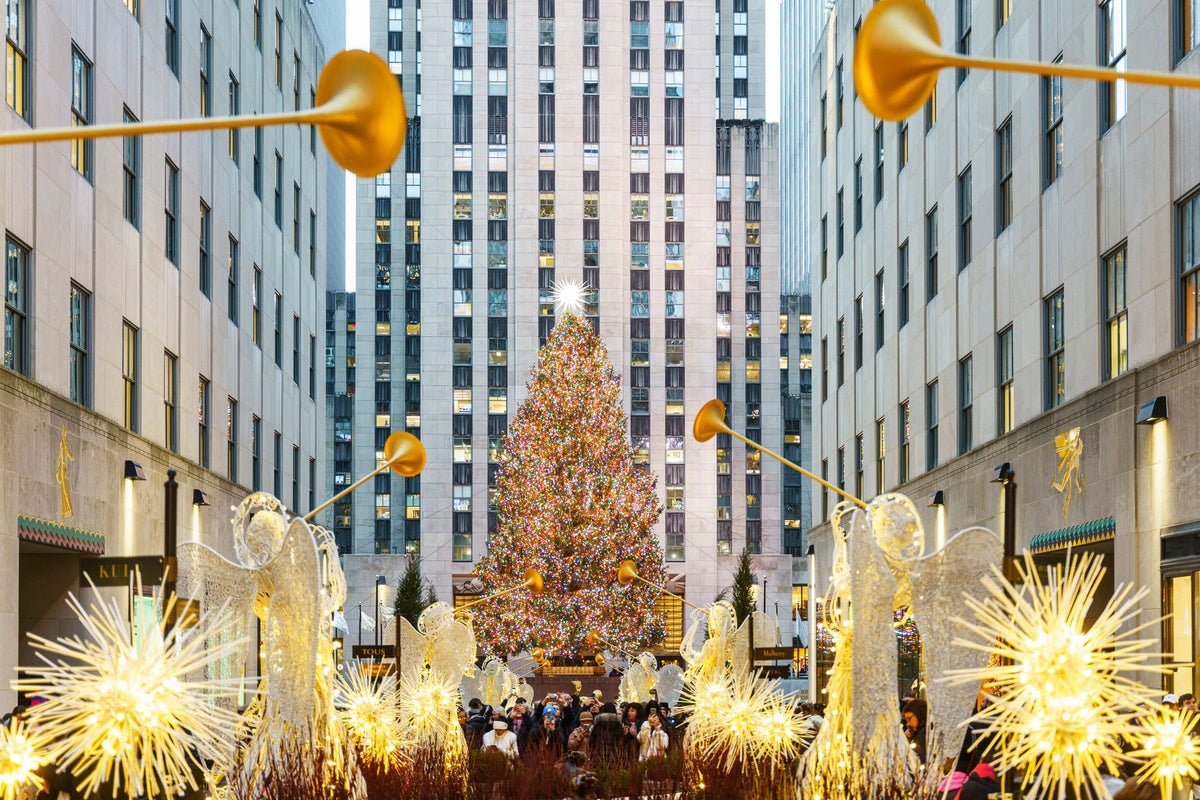In the Cabin of the Crazy One
A Vajrayana practitioner recounts her late-in-life gender transition while on a 12-day solo meditation retreat The post In the Cabin of the Crazy One appeared first on Tricycle: The Buddhist Review.
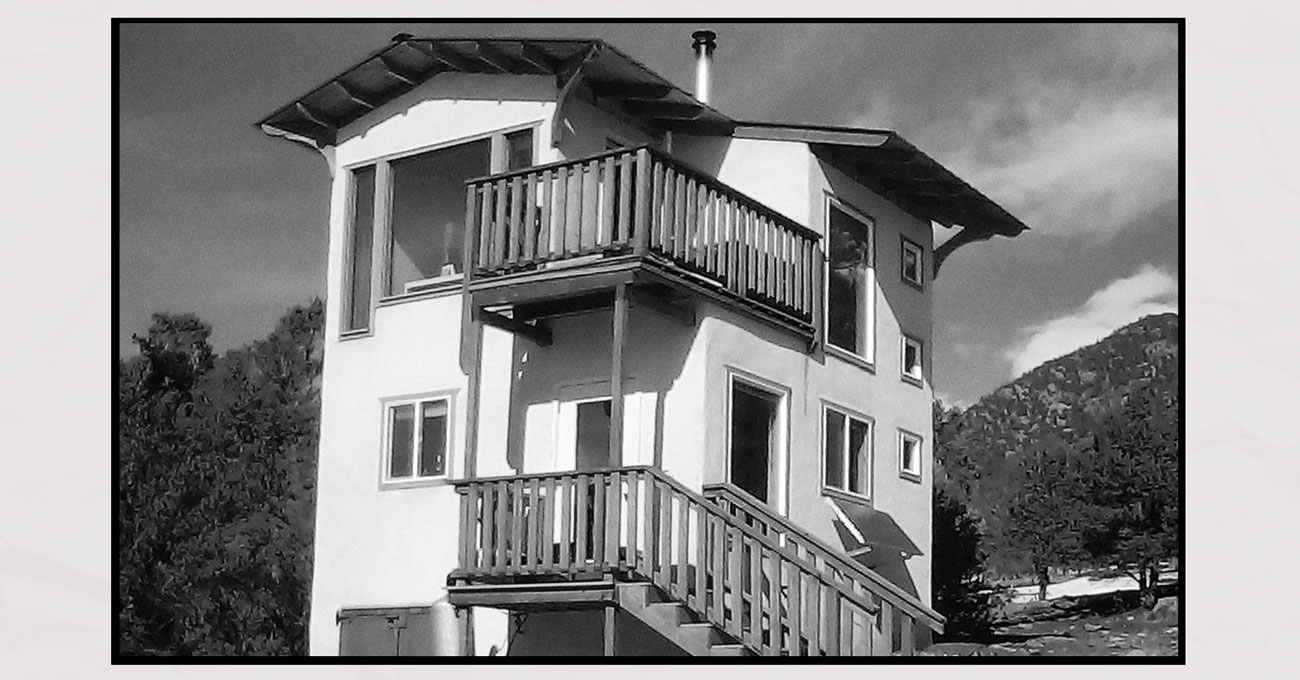
 Photo courtesy the author
Photo courtesy the authorThe San Luis Valley in south central Colorado is the size of the state of Connecticut and remarkably wide. It is flanked by the San Juan mountains to the west and the Sangre de Cristos to the east, and contains the headwaters of the Rio Grande. The valley is also amazingly flat. Looking west from the Baca Grande in the foothills of Kit Carson Mountain, everything seems laid out before you. It is as though an infinite vastness were knowable, though you cannot see most of the roads, or the herds of elk drifting across the valley floor.
For decades, spiritual seekers have come to the Baca foothills outside the town of Crestone, which is home to various retreat centers, hermitages, and temples of Eastern and Western and New Age religions. Bejeweled shrines sit unprotected beside creek beds; massive stupas perch on outcroppings. Tibetans in particular are drawn here, having found the scenery powerfully reminiscent of the land from which they’ve been exiled since the late 1940s. Multicolored prayer flags, shredded by wind, festoon the Baca.
I have come here to do a twelve-day solo retreat in a cabin hidden among the pygmy pines. It is early February, and the cabin has a good wood stove. It has a bucket for a bathroom, a propane burner, two water coolers, and a faucet a quarter mile down the mountain. It is, in spiritual parlance, a very protected space, especially the upstairs loft, where I will practice ten hours a day before a window looking over the tops of the pinyons and junipers, and across the San Luis Valley.
I came to the cabin to accomplish Guru Yoga, the fourth and final ngöndro practice Tibetan Buddhists must complete in order to receive the abhisheka blessing and progress to the high Tantric teachings and empowerments. To begin a session of Guru Yoga you need to briefly go through the three other ngöndros. This includes Vajrasattva mantra, a seated practice where you repeat a hundred-syllable Sanskrit chant while visualizing Vajrasattva (which means “indestructible being”) in the form of an adolescent male seated cross-legged and floating above your head. As you say the mantra, Vajrasattva pours amrita, or nectar (literally “anti-death potion”), out the bottom of his body. The amrita enters you through the top of your head, flushes out your defilements, and washes down into the earth.
It’s not an easy practice to get right, partly because there’s never an experience of rightness. The goal is to be in a nondual state, where there’s no right or wrong, and no “you” to evaluate anything. Once it gets going, the visualization does what it wants. I’ve seen amrita come down as water, or vodka. At times it is sparkly, or silver like mercury. Once Vajrasattva poured a stream of live rats into me. It’s a colorful religion.
But on day one of the retreat I felt completely stuck, even though I’d done the practice hundreds of times. I sat chanting the mantra, gazing inwardly upward at Vajrasattva, but he had nothing for me—no amrita, no vodka, no mercury, sewer rats, blood, pus, molasses, motor oil, nothing. Often you run into a wall several days in, after you’ve settled. That’s when you find out what’s really going on with you, at which point you might scream, or sing, or get violently ill, or lie curled up devastated for a few hours. But here was the wall, and my retreat had barely begun.
My mind went to Vajratopa, who is Vajrasattva’s consort, and who often goes missing in the iconography. But she’s there in the longer liturgical text, and in some of the illustrations, straddling Vajrasattva in yab-yum, or “primordial union,” her haunches in his lap, her feet hooked at the ankles behind his waist. She is holding a knife in one hand and a skull cup in the other. I kept chanting, picturing them up there above my head. I hoped the nectar would pour from their union, enter my body and harmonize my masculine and feminine aspects, which seemed to be in a lifelong tug-of-war.
In the months before the retreat I’d been attending a “trans feminine spectrum” support group at my local LGBT center. On the first Wednesday of each month, forty or so people crammed into a small room to commit this act of support. We tried arranging our chairs in a circle, but there were too many of us. The circle spread to the walls and then spiraled inward. We went around introducing ourselves and our pronouns, which varied from “she/ her” to “he/him” to “either” to “I don’t know” to “I don’t care.” (It would be another couple years before “they/them” would come on the scene.)
The discussions were free-for-alls. There were so many people, so little time. The important thing for me was the space itself, which was brimming with energy, and the sense of change. It was 2013. Trans fashion models were beginning to come out. Laura Jane Grace was fronting the punk band Against Me!, Laverne Cox would soon appear on the cover of Time. Amanda Simpson, a trans woman, was working in the Commerce Department for the Obama Administration. Ordinary trans people—quietly, one by one—were beginning to come out at their jobs and at colleges.
Yet the people in that room, including the facilitators, were in bad shape. There was a lot of PTSD, depression, addiction, eating disorders, suicidality. Many had far more pressing issues than gender. Then again, having your gender identity in a constant state of upheaval magnifies every issue. “How come we only meet once a month?” was a question repeated monthly.
I wasn’t doing so well myself. I hadn’t worked a regular job since I’d returned from being a poet-in-residence at a college in Oklahoma, and my unemployment insurance had run out. I did some freelance editing, taught workshops in my living room and at conferences, and published poems in good journals for little money. Being underemployed in New York is scary. This is how people go homeless, I told myself. I was spending savings on rent. I didn’t eat out or go to the movies.
I would later learn the terrifying word “decompensation,” which sounded like a financial term until I looked it up: “a breakdown in an individual’s coping mechanisms resulting in progressive loss of functioning.” Was six years of intense Buddhist practice, which encouraged me to renounce all hope and striving, making me decompensate? Each day, when I contemplated the Four Reminders—meant to turn the mind to meditation practice—the one about my “precious human birth” set me on edge, while the death reminder didn’t faze me a bit.
I had a brief relationship with a young woman named Liz, who managed a Starbucks in Philadelphia. Liz wanted to be a poet, and had talent, but was too depressed to do anything about it. We’d met at a writing conference held at a big hotel. She was tracking me, staring at me from the backs of rooms. She was tall, pretty, and lost. She was bisexual, and liked that I crossdressed. I liked her humor and directness. “I was going to give you a call last night,” she once explained, “but then I didn’t.” We tried being boyfriend and girlfriend, but I sensed, after a disastrous road trip, it wasn’t going to work. There was a huge age gap, and you could say our depressions didn’t get along.
Still, we were very fond of each other, and remained friends. We liked to dress up and go out together, both in Philly and New York. The first time we did this we shared an unusual moment. After finishing my makeup I stepped into a skirt.
“What just happened?” she said, looking over at me.
“What?”
“You changed.”
“Yeah, I put on a skirt.”
“No.” She narrowed her eyes and peered at me. “You changed.” There was a dumbfounded smirk on her face. “You’re like . . . female.”
“I would come out,” I said to her later, “but I don’t know what I’d come out as.”
“Who cares,” she said, “as long as you come out to yourself.”
There are myriad ways in which trans people come out to themselves. Cracking your egg, it’s called, or just cracking. First you’re an egg, an unhatched, proto-trans person. You don’t quite realize you’re in a shell, or you may have a vague sense of a shell—of “shellness”—but you don’t quite know what it is. Others may see your shell more than you do, though they can’t see who, or what, is inside. Not until you crack.
I’ve known trans people who were cracked by something they saw in a book or magazine, a movie or TV show. Others are cracked by meeting someone trans, or the experience of performing in drag. Sometimes it’s a sexual experience. Sometimes it’s a near-death encounter, or the death of someone you’re close to, making you stop and say, What the hell am I waiting for? Social media and the internet, with sites like Reddit and YouTube, may have hatched more of us than everything else combined.
When I think of trans people from past generations, I never cease to marvel at them. With so much danger, and so few things in their world to crack their egg, how had these Houdinis come out? I, on the other hand, was a reverse Houdini. I’d kept a woman’s wardrobe my entire adult life, fed myself trans-related media, attended a trans support group (hello), and somehow still managed not to crack. In the end, I needed fifty years of sadness, a remote cabin, and an outrageous religion to do it.
I didn’t even do it. Vajratopa did.
Sitting in the loft of the cabin, chanting the hundred-syllable mantra, I was hoping Vajrasattva and Vajratopa could bring my masculine and feminine energies into balance. Instead, Vajratopa took over, pouring her skull cup of feminine nectar into the top of my head and down my spine. I felt myself shift into a female form—I don’t know how else to say it—and energy coursed through me like never before.
A little later, Guru Yoga finished the job. In Guru Yoga practice, it is a teacher (guru) who sits above your head as you chant the simple mantra, Hear my call. You’re calling the guru from afar. You say it a million times—hear my call, hear my call—like some lost child on a mountain. A black-and-white photograph of the guru, my teacher’s teacher, sat on the shrine. I’d never seen this picture of him. He was dressed in a military uniform. His face was in three-quarter profile, looking to the side—though, as often happens in photos, he seemed to look everywhere. But I couldn’t get him to look at me. Then I called to him as a woman, and our eyes met. It’s no problem, his eyes said, to be a woman. I collapsed weeping. You should be a woman, he said.
I closed my morning practice and came downstairs for lunch, engaging in the ordinary activities of cooking, eating, washing, and one other thing: freaking out over what the hell went on in that loft. A key meditation instruction is “look again.” Don’t come to conclusions, just come back and look again. That’s what I did later that afternoon, again that evening, and the next morning. Each time I went upstairs and reentered practice, I was female. Each time I came downstairs to check on the fire or do chores or urinate, I was in shock.
At night, unable to sleep, I pictured living as a woman. I saw myself at a social gathering in a lush garden, standing near a tree in a print dress, holding court, smiling ear to ear as people came up to introduce themselves. A question arose from within: You mean I actually get to be me? The words were euphoric, and terrifying.
Towards the end of the retreat I grew nervous and sleepless. Was I really going to do this? Could I? I feared the responses of others, the raised eyebrows of women who’d known me for years, men scratching their heads, former students typing question marks to one another. These fears soon gave way to deeper concerns: What will I look like? How will I make a living? Will hormones make me impotent? Will they kill my creativity? Who will ever love me?
But each morning upstairs, when I opened the day with bodhicitta practice, my heart broke open, and it was a woman’s heart. As the sun rose over the mountains behind me, pulling in the shadows and flooding the valley with light, I was overwhelmed with compassion for the world’s suffering. I wept for all the people I hadn’t helped because I’d been so stuck in my own problems all my life.
A question arose from within: You mean I actually get to be me? The words were euphoric, and terrifying.
On a final evening walk I looked up at the mountain, determined to state out loud: “I want to be a woman.” My heart was in my throat, I could barely speak above a whisper. “I want to be a woman,” I finally said, and the mountain said, “Fine by me.” A tree said, “OK.” “Like I care?” a chipmunk weighed in.
What visions do you trust? When you’re alone in a cabin for twelve days and something shows up in your stillest moment, is it real, or is it in need of a reality check? Is reality, as the guru suggested, a fantastic rumor? Isn’t depression, my most constant companion all these years, the result of being out of sync with reality? Could decades of thinking of myself as male be a grand illusion? Who would believe that? Did I believe it?
A last vision came to me while packing up to leave: a small girl, very thin, with bright, deep-set eyes, her orbital bones beginning to show. She was being held hostage. I only glimpsed her through a crack in a padlocked shack. She handed me a note on a scrap of paper. The note said, “Don’t forget me.” She was unsure I’d come back for her, yet I was her only hope, and she had no choice but to trust me. But did I trust her? Nothing in my life had worked out, and now here was this girl I’d never seen, pleading. Do I let go of everything, and base my life on her?
After a retreat there is reentry, a return to the world of daily life. Reentries are precarious and seldom uneventful. I think of the Apollo 11 astronauts returning to earth, and how, if the angle of reentry was slightly off, the command module would skip like a stone off the atmosphere, or else burn up like a meteor. I had a lot of time—most of the retreat—to contemplate returning to my life, but no matter how hard I tried, I couldn’t imagine it.
Just down the mountain was a friend. Liz had arrived in Crestone for a five-day program at the retreat center. In the residence hall, after we hugged, Liz stepped back and said, “What’s going on?” I don’t know what she saw. All I’d seen in the mirror—the first mirror I’d seen in a while— was a thousand-yard stare and someone who needed a shave.
“I want to show you something,” I said.
I walked her up the mountain to the Cabin of the Crazy One. We went up to the shrine room, now cleared and swept bare. The sun had just set, but there was still plenty of light in the valley. We stood at the window gazing out for a while. Then we sat on the floor facing each other with our legs outstretched.
“This is where it happened,” I said.
“What happened?”
“I’m going to live as a woman.”
“OK,” she said. Then she narrowed her eyes, and tilted her head to the side.
“What?”
“You’re not a Tina.”
“No, I’m not.”
She thought for a moment, cocked her head the other way, and held up a finger. “You’re more of a Diana.”
It should be mentioned that the Vajrayana Buddhist protocols I’ve described are considered restricted. Vajrayana itself is known as the “ear-whispered” lineage, and students are instructed to keep its methods and revelations secret. We even recite protector chants daily to remind us that wrathful beings stand ready to seize and devour “those who profess the tantras to all.” It would seem, then, that I have sinned by divulging the details of my practice, so if I get struck by lightning between now and the time you read this, you’ll know why.
Personally I’m not worried, due to another Vajrayana teaching, which tells us that the highest spiritual truths are “self-secret.” Even if such things were made explicit, it would still be impossible for someone of “degraded awareness” to see them. I ought to know: nothing could have been more self-secret than my own gender. Over the years, much of what I’ve detailed in this book was told to several therapists, none of whom so much as suggested I might be trans. But even if they had, it wouldn’t have made a difference.
There is simply no knowing a thing if it is self-secret, perhaps because that thing refuses to know itself in your presence. It is like a valley, spread out before you, hiding in plain sight.
⧫
Adapted from This Body I Wore by Diana Goetsch(Farrar, Straus and Giroux, May 24, 2022)

Get Daily Dharma in your email
Start your day with a fresh perspective

Explore timeless teachings through modern methods.
With Stephen Batchelor, Sharon Salzberg, Andrew Olendzki, and more
![]()
Thank you for subscribing to Tricycle! As a nonprofit, we depend on readers like you to keep Buddhist teachings and practices widely available.
This article is only for Subscribers!
Subscribe now to read this article and get immediate access to everything else.
Already a subscriber? Log in.

 Kass
Kass 







